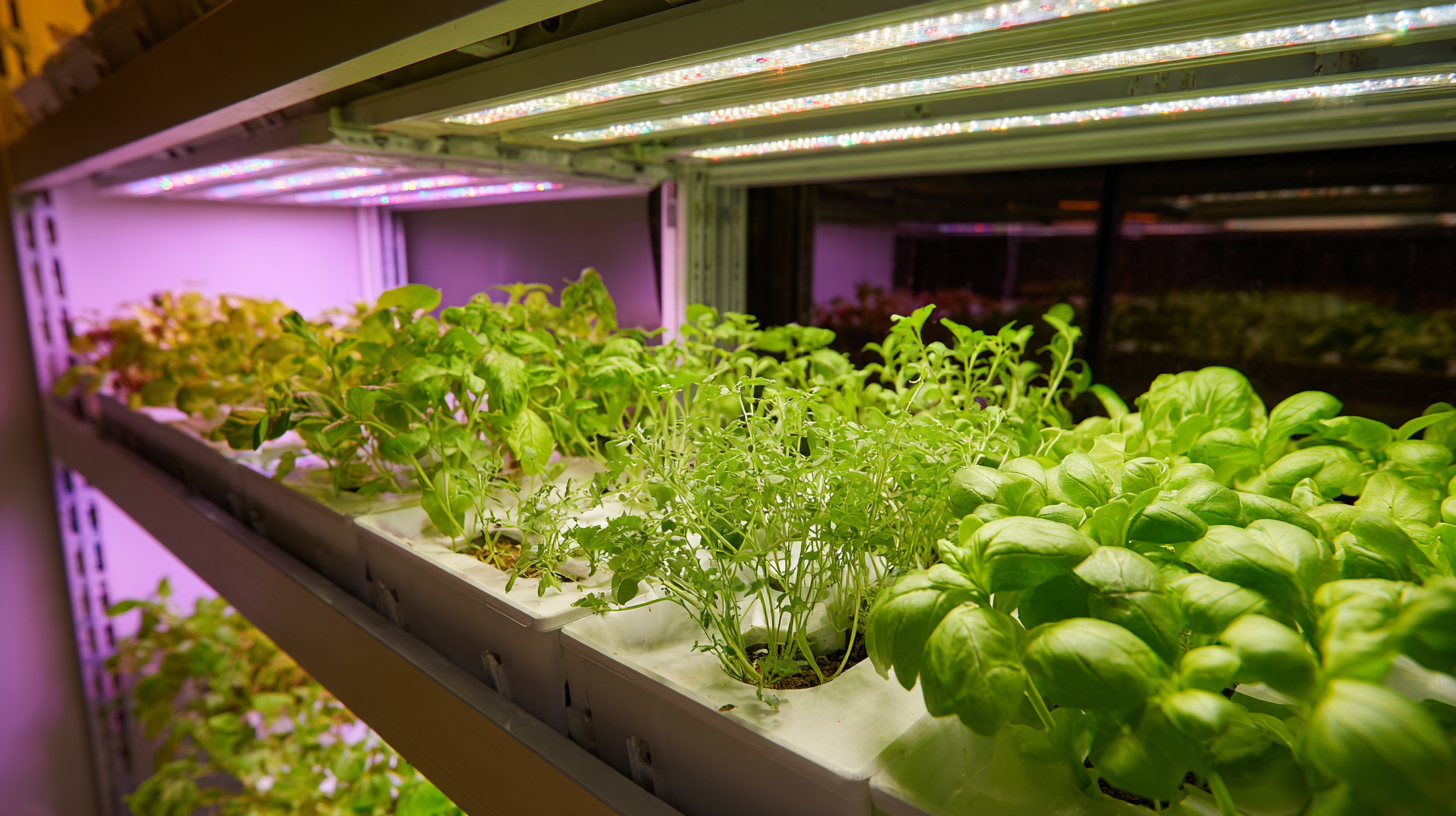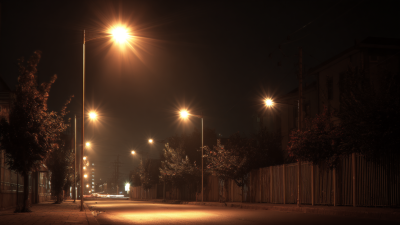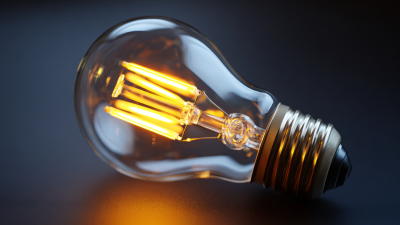Maximizing Indoor Gardening Success: The Ultimate Guide to Choosing the Right Grow Lights
In the realm of indoor gardening, choosing the right grow lights is crucial for maximizing success and yield. According to a report by the National Gardening Association, nearly 35% of households engage in some form of indoor gardening, highlighting a growing trend that emphasizes the need for adequate lighting solutions. Studies indicate that plants require specific light spectrums for optimal growth, with grow lights playing a pivotal role in mimicking natural sunlight. The market for grow lights has seen substantial growth, projected to reach USD 6.18 billion by 2025, driven by advancements in LED technology and energy efficiency. Understanding the various types and functionalities of grow lights can empower gardeners to create thriving indoor ecosystems, ensuring plants receive the right intensity and duration of light for their unique growth stages. This ultimate guide aims to empower indoor gardeners with the knowledge needed to select the most effective grow lights for their specific needs.

Understanding the Importance of Grow Lights in Indoor Gardening
When engaging in indoor gardening, understanding the importance of grow lights is crucial for the health and productivity of your plants. According to a report by the National Gardening Association, 62% of American households are involved in some form of gardening, and the demand for quality grow lights has surged as more gardeners move indoors. Grow lights not only supplement natural sunlight but also provide the specific wavelength needed for photosynthesis, which is vital for plant growth. Without adequate light, indoor plants may become weak and leggy, failing to reach their full potential.

A recent study published in the Journal of Horticulture found that plants exposed to optimal light conditions under LED grow lights exhibited a 40% faster growth rate compared to those grown with standard fluorescent lights. This emphasizes the significance of choosing the right type of grow lights tailored to the specific needs of the plants. For instance, full-spectrum LEDs can mimic sunlight and are ideal for a wide variety of plants, while specialized spectrums can enhance flowering or leaf production in particular species. By investing in the right grow lights, indoor gardeners can ensure a vibrant and thriving indoor garden year-round.
Types of Grow Lights: Choosing Between LED, Fluorescent, and HID
When it comes to maximizing indoor gardening success, the choice of grow lights plays a crucial role. The three primary types of grow lights—LED, fluorescent, and HID—each have distinct advantages and drawbacks. LED lights, known for their energy efficiency and long lifespan, consume about 50% less energy compared to traditional lighting options. A report by the Department of Energy indicates that the widespread use of LED lighting in horticulture could potentially reduce energy consumption by over 30%, making them a popular choice among indoor gardeners.
Fluorescent lights, particularly T5 tubes, are another viable option for indoor gardening. They offer a balanced spectrum of light and are relatively inexpensive, which appeals to beginners and hobbyists alike. According to a study by the University of California, fluorescent lights generate less heat than their HID counterparts, allowing plants to be placed closer to the light source without the risk of overheating. However, they may require more frequent replacement than LEDs, which can impact long-term costs for serious gardeners.
HID lights, including metal halide and high-pressure sodium varieties, are often favored for their intense light output and penetration capabilities. They can significantly increase yields, with studies showing that HID lights can boost growth rates by up to 30% in certain crops compared to less intense light sources. Despite the high initial investment and energy usage, many commercial growers opt for HID due to their superior performance in large-scale operations. Understanding the benefits and limitations of each type of grow light is essential for selecting the right solution that aligns with specific gardening goals.

Determining the Right Light Spectrum for Your Plants' Growth Stages
Choosing the right light spectrum for your plants is crucial for maximizing indoor gardening success. Different growth stages of plants require specific light wavelengths to thrive. According to a report by the U.S. Department of Agriculture, red light (around 640-680 nm) is essential during the flowering stage as it supports blooming and fruiting. Conversely, blue light (400-500 nm) plays a vital role during the vegetative stage, promoting healthy leaf growth and stem strength.
Incorporating the right spectrum into your indoor garden can lead to substantial improvements in plant health and yield. Research published in the journal "HortScience" indicates that using full-spectrum LED grow lights can increase plant growth rates by up to 30%. This enhancement stems from the ability of LEDs to provide both red and blue light, accommodating the unique requirements of plants throughout their life cycles. By investing in adjustable grow lights that can replicate the ideal light spectrum for each stage, indoor gardeners can cultivate healthier plants and achieve higher harvests.
How to Calculate the Optimal Light Duration and Intensity
When it comes to indoor gardening,
light
is one of the most crucial elements influencing plant growth and health. According to a report by the Horticultural Lighting market projected to reach
$2.85 billion by 2025,
understanding the optimal light duration and intensity is essential for maximizing yields and plant vitality. Plants have varying light requirements depending on their species, developmental stage, and whether they are flowering or not.
For instance, most leafy greens thrive on
12-16 hours
of light per day, while fruiting plants like tomatoes generally require around
14-18 hours.
Calculating the right intensity involves measuring the light's
PAR (Photosynthetically Active Radiation),
which is essential for photosynthesis. Studies indicate that plants typically require a PAR intensity of
200-400 µmol/m²/s
for optimal growth during the vegetative stage, and this can increase to
600-800 µmol/m²/s
during the flowering stage. It's critical to position grow lights at the proper distance from plants to ensure they receive adequate intensity without causing heat stress.
For instance, LEDs should be placed
12-24 inches
away, depending on their wattage and output. By strategically managing these factors, indoor gardeners can create a thriving environment that closely mimics natural sunlight, leading to healthier and more productive plants.
Common Mistakes to Avoid When Using Grow Lights for Indoor Gardening
When using grow lights for indoor gardening, avoiding common mistakes is crucial to ensure your plants thrive. One frequent error is neglecting the appropriate light spectrum. Different plants require varying wavelengths of light; for example, leafy greens benefit from a cooler spectrum, while flowering plants thrive under warmer light. It’s essential to select grow lights that match the specific needs of the plants you are cultivating, which can significantly enhance growth and yield.
Another common pitfall is improper placement of grow lights. Many indoor gardeners either place the lights too far from the plants, leading to inadequate exposure, or too close, which can cause heat stress. A general rule of thumb is to keep grow lights about 12 to 24 inches above the plants, adjusting as necessary based on the type of light used and the plant's response. Regular monitoring of the plants will help in determining the right distance to ensure they receive optimal light without suffering from burn or stunted growth.
Maximizing Indoor Gardening Success: Light Spectrum Preferences
This chart illustrates the effectiveness of various light spectrums for indoor gardening. Understanding these preferences can help maximize plant growth and overall success.
Related Posts
-

Benefits of Using LED Fixtures for Enhanced Energy Efficiency
-

How to Choose the Best LED Street Light for Your Urban Environment
-

7 Best Strategies for Choosing the Perfect LED Panel for Your Space
-

Ultimate Guide to Choosing the Best LED Explosion Proof Lighting for Your Industrial Needs
-

How to Choose the Best LED Outdoor Lighting for Your Garden
-

How to Harness the Power of LED Technology for Energy Efficiency
